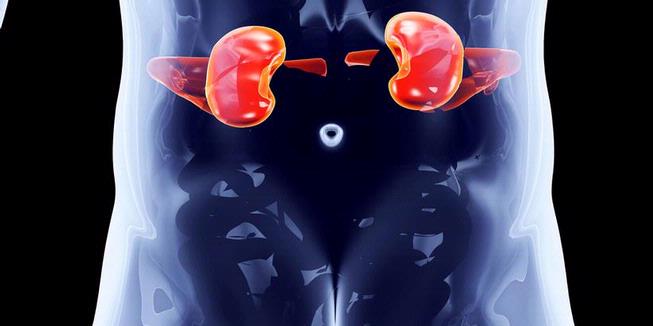Urine that has been used as health indicators could help predict a person's life expectancy. A report from the National Kidney Foundation's American Journal of Kidney Diseases shows a strong correlation between the level of protein in the urine (proteinuria) and risk of death.
Based on these reports, healthy people tend to have low levels of proteinuria. This indicates good kidney function as a filtering organ protein that remains in the body. Signaling proteins that go wasted no specific damage that causes the kidneys to leak.
"Our report shows, high proteinuria can reduce life expectancy in the majority of men and women," said researcher Dr. Tanvir Chowdhury Turin from the University of Calgary. This study uses 810 thousand urine samples of patients who are not hospitalized in Alberta, Canada. The patient also had no history of kidney-related diseases.
The results showed moderate to high levels of proteinuria lower life expectancy 30-85 years of age in men and women. Men and women age 40 years without proteinuria had a life expectancy of 15.2 and 17.4 years longer than those with higher levels of proteinuria. Women and men without proteinuria also have a life expectancy of 8.2 and 10.5 years longer than those with moderate levels of proteinuria.
Proteinuria using dipstick testing and can usually be done in any laboratory. In healthy conditions, usually still found proteinuria in small quantities. Moderate to large amount of proteinuria indicates an error in the filtering system (glomeruli) or injury in the kidney area. This condition can be a symptom of disease glomerulonephritis. Infection in the urine such as cystitis or pyelonephritis also be the cause of high levels of proteinuria.
In good health, a person can issue a range proteinuria 0-8 mg / dL. Normally a small amount of protein that escapes into the kidney is able to re-absorbed by the body. This may be because the kidneys also control the amount of protein in the blood. When the proteins in the blood are too high, then the protein escaped and joined the urine. The magnitude of the exit marked proteinuria foamy urine (foamy).
The greater proteinuria were out, the higher the number on the dipstick marker (marker urine level). Figures 1 + proteinuria is for as much as 30 mg / dL or less equivalent of 0.5 g / day. 2 + proteinuria figures indicate that came out was 100 mg / dL or the equivalent of 0.5-1 g / day. Figures are for the 3 + proteinuria that out of 300 mg / dL or less equivalent of 1-2 g / day. The highest figure is intended for 4 + proteinuria greater than 200 mg / dL or the equivalent of more than 2 g / day.
Previously, the only known link between the level of proteinuria with early onset of symptoms related to kidney disease. Given this research, it allows one to know the immediate risk to life and step recovery plan from the beginning.
Based on these reports, healthy people tend to have low levels of proteinuria. This indicates good kidney function as a filtering organ protein that remains in the body. Signaling proteins that go wasted no specific damage that causes the kidneys to leak.
"Our report shows, high proteinuria can reduce life expectancy in the majority of men and women," said researcher Dr. Tanvir Chowdhury Turin from the University of Calgary. This study uses 810 thousand urine samples of patients who are not hospitalized in Alberta, Canada. The patient also had no history of kidney-related diseases.
The results showed moderate to high levels of proteinuria lower life expectancy 30-85 years of age in men and women. Men and women age 40 years without proteinuria had a life expectancy of 15.2 and 17.4 years longer than those with higher levels of proteinuria. Women and men without proteinuria also have a life expectancy of 8.2 and 10.5 years longer than those with moderate levels of proteinuria.
Proteinuria using dipstick testing and can usually be done in any laboratory. In healthy conditions, usually still found proteinuria in small quantities. Moderate to large amount of proteinuria indicates an error in the filtering system (glomeruli) or injury in the kidney area. This condition can be a symptom of disease glomerulonephritis. Infection in the urine such as cystitis or pyelonephritis also be the cause of high levels of proteinuria.
In good health, a person can issue a range proteinuria 0-8 mg / dL. Normally a small amount of protein that escapes into the kidney is able to re-absorbed by the body. This may be because the kidneys also control the amount of protein in the blood. When the proteins in the blood are too high, then the protein escaped and joined the urine. The magnitude of the exit marked proteinuria foamy urine (foamy).
The greater proteinuria were out, the higher the number on the dipstick marker (marker urine level). Figures 1 + proteinuria is for as much as 30 mg / dL or less equivalent of 0.5 g / day. 2 + proteinuria figures indicate that came out was 100 mg / dL or the equivalent of 0.5-1 g / day. Figures are for the 3 + proteinuria that out of 300 mg / dL or less equivalent of 1-2 g / day. The highest figure is intended for 4 + proteinuria greater than 200 mg / dL or the equivalent of more than 2 g / day.
Previously, the only known link between the level of proteinuria with early onset of symptoms related to kidney disease. Given this research, it allows one to know the immediate risk to life and step recovery plan from the beginning.

 RSS Feed
RSS Feed